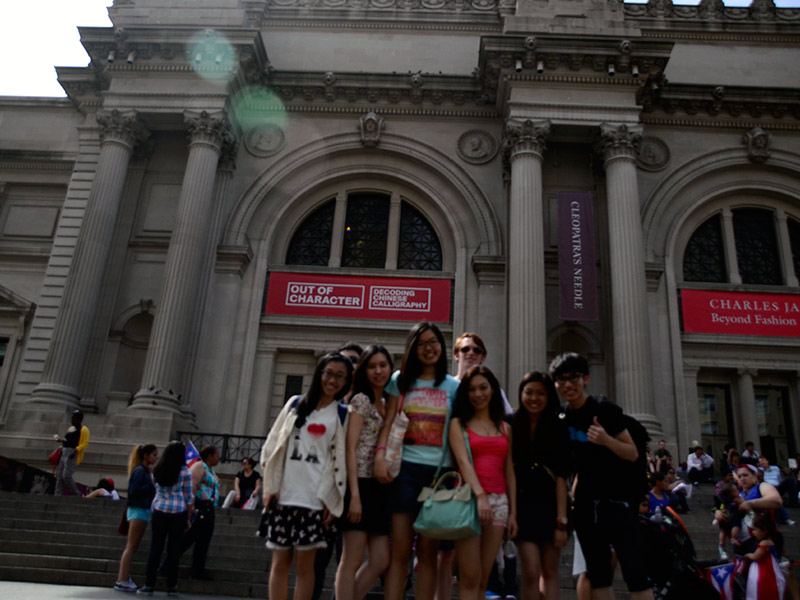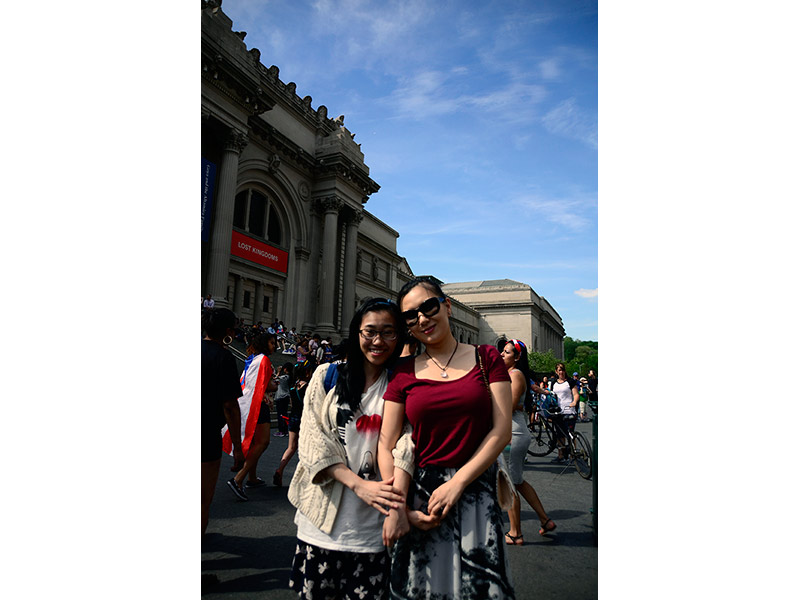Photo Gallery > BridgeUSA-FUSIA’s J-1 Internships
The American Museum of Natural History
Copyright (c) 2025 | All rights reserved | FUSIA Communications
2025202420232020201920182017201620152014201320122011201020092008ReturnNYEPSelf-PlacedCCIP NYC (Hosts)CCIP NYC (Activities)NewsAccolades
The American Museum of Natural History
Published on 2014-06-08
On June 8, 2014, a group of the Cross Cultural Internship Program exchange visitors visited the American Museum of Natural History (AMNH) located on Central Park.
Enter the ANNH on Central Park West, pass the statue of President Theodore Roosevelt, and there, towering above you in the main hall, is one of the most impressive displays of dinosaur anatomy on the planet. It’s a replica of a Barosaurus skeleton, and at some 45 feet, it’s the tallest dinosaur exhibit in the world.
Everything about the AMNH exists on a grand scale, which is befitting for an institution whose mission is nothing less than the study of everything in the natural world, including the universe and the taxonomy of all known creatures, living and extinct.
The AMNH’s holdings comprise more than 30 million specimens, only a portion of which can be displayed at any one time. You can easily get lost meandering through the massive museum’s 46 permanent exhibition halls, which is a pretty wonderful way to spend an afternoon.
On June 8, 2014, the Cross Cultural Internship Program (CCIP) students visited the American Museum of Natural History, located on Central Park.
The students first entered the Museum on Central Park West, passing a statue of President Theodore Roosevelt. In the main hall, the students saw one of the most impressive displays of dinosaur anatomy, a replica of a Barosaurus skeleton, the tallest dinosaur exhibit in the world standing at 45 feet.
"I saw so many fascinating things at the museum," said Eva Lau, a second-year Hang Seng Management College student. "I learned so much while having fun, too."
Founded in 1869, the Museum is renowned for its exhibitions and scientific collections, serving as a guide to the world's cultures by advancing its global mission to discover, interpret, and pass on knowledge about human cultures.
The Museum's collection comprises more than 30 million specimens, meaning that only a portion of the holdings can be displayed at any one time. The students enjoyed the day wandering through the museum’s 46 permanent exhibition halls.
Enter the ANNH on Central Park West, pass the statue of President Theodore Roosevelt, and there, towering above you in the main hall, is one of the most impressive displays of dinosaur anatomy on the planet. It’s a replica of a Barosaurus skeleton, and at some 45 feet, it’s the tallest dinosaur exhibit in the world.
Everything about the AMNH exists on a grand scale, which is befitting for an institution whose mission is nothing less than the study of everything in the natural world, including the universe and the taxonomy of all known creatures, living and extinct.
The AMNH’s holdings comprise more than 30 million specimens, only a portion of which can be displayed at any one time. You can easily get lost meandering through the massive museum’s 46 permanent exhibition halls, which is a pretty wonderful way to spend an afternoon.
On June 8, 2014, the Cross Cultural Internship Program (CCIP) students visited the American Museum of Natural History, located on Central Park.
The students first entered the Museum on Central Park West, passing a statue of President Theodore Roosevelt. In the main hall, the students saw one of the most impressive displays of dinosaur anatomy, a replica of a Barosaurus skeleton, the tallest dinosaur exhibit in the world standing at 45 feet.
"I saw so many fascinating things at the museum," said Eva Lau, a second-year Hang Seng Management College student. "I learned so much while having fun, too."
Founded in 1869, the Museum is renowned for its exhibitions and scientific collections, serving as a guide to the world's cultures by advancing its global mission to discover, interpret, and pass on knowledge about human cultures.
The Museum's collection comprises more than 30 million specimens, meaning that only a portion of the holdings can be displayed at any one time. The students enjoyed the day wandering through the museum’s 46 permanent exhibition halls.
Copyright (c) 2025 | All rights reserved | FUSIA Communications



















